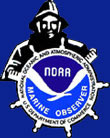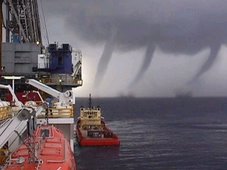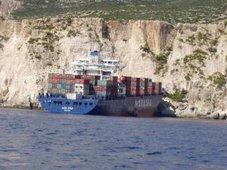 Once again we are saddened by another beach incident along lower Lake Michigan. This time at Porter Beach in Porter, Indiana.
Once again we are saddened by another beach incident along lower Lake Michigan. This time at Porter Beach in Porter, Indiana.Search resumes for teen missing in lake
Raphael Paloma, 13 years old of Chicago is still missing. He and his brother entered the waters on the 2nd. His brother was rescued. As of 5:00 PM Sunday, August 3, 2008 the search was again suspended for the day. It will restart at 5:00 AM on the 4th.
His family has been holding a vigil and camping out on the beach where Raphael went missing. Reports coming in say that Raphael might have saved his brothers life by pushing him out of harms way when the rip current took them out.
We can't tell you how many times the Robin Storm Foundation has held severe weather safety seminars and tried to pound the rip current message to all.
We can't tell you how many times we have warned people at one beach about the rip currents to have them move to an adjacent unprotected beach, thinking that it would be safe. This includes both youths and adults alike.
We can't tell you how many times once a beach has been closed because of rip currents. Life Guards, Security Personnel and safety specialists have had to go back time and time again to get people who reenter the water, out.
We cannot stress enough that when a beach is closed and posted due to rip currents, or people who are told by life guards that the beach is closed due to rip currents. IT IS CLOSED! PERIOD! STAY OUT OF THE WATER! You do not need any further warning . Moving some 50 yards to an unprotected beach is as fool hardy as they come.
To answer the question. Can you save someone from themselves? No you can't. But you can continue to get the message out... So here it is one more time.....
NOAA Reminds Beachgoers That Rip Currents Can Be a Threat
Heading to the beach for summer vacation? NOAA is urging beachgoers to learn how to “Break the Grip” of rip currents before getting into the water. Rip currents are a deadly threat — accounting for more than 80 percent of lifeguard beach rescues.
Rip currents are narrow channels of fast-moving water that pull swimmers away from the shore. They can occur at any beach with breaking waves, including the Great Lakes.
Moving at speeds of up to eight feet per second, rip currents can move faster than an Olympic swimmer and can easily overpower a victim. Panicked swimmers often incorrectly swim straight back to shore — putting themselves at risk of drowning because of fatigue.
If caught in a rip current, don’t fight it! Swim parallel to the shore and then swim at an angle – away from the current – toward shore.
“We have a constant education campaign about rip currents since many people visit the beach infrequently and may be unfamiliar with this leading surf hazard,” said Timothy Schott, meteorologist with NOAA’s National Weather Service Marine and Coastal Branch in Silver Spring, Md. “This year, we have developed bilingual English-Spanish signs to reach a wider audience with life-saving instructions on how to break the grip.”
"Rip currents can be killers. The United States Lifesaving Association estimates that the annual number of deaths due to rip currents on our nation's beaches exceeds 100,” said Peter Davis, president of the Gulf Coast Region of the United States Lifesaving Association and chief of the Galveston Island Beach Patrol. “The greatest safety precaution that can be taken is to recognize the danger of rip currents and always remember to swim at beaches with lifeguards."
NOAA also offers the following safety tips:
- Swim at lifeguard-protected beaches.
- Never swim alone.
- Speak to on duty lifeguards about rip currents and other expected water hazards.
Many coastal National Weather Service offices issue what's known as Surf Zone Forecasts that provide a low, moderate or high description of rip current risk. All NOAA National Weather Service offices include moderate to high risk of rip currents in their Hazardous Weather Outlook. These forecasts are available online at www.weather.gov.
More safety tips and educational materials are free and available to download at http://www.ripcurrents.noaa.gov/.
The National Oceanic and Atmospheric Administration, an agency of the U.S. Commerce Department, is dedicated to enhancing economic security and national safety through the prediction and research of weather and climate-related events and information service delivery for transportation, and by providing environmental stewardship of our nation's coastal and marine resources. Through the emerging Global Earth Observation System of Systems (GEOSS), NOAA is working with its federal partners, more than 70 countries and the European Commission to develop a global monitoring network that is as integrated as the planet it observes, predicts and protects.
Here are some additional links of interest....
Fields Current Velocity Nowcast
Indiana Dunes Nowcast
Storm rocks P&O's boat
5:00AM Sunday August 03, 2008
By Jane Phare and Michelle Coursey

P&O Cruises will hold an inquiry into the incident which left passengers injured, frightened and parts of the Pacific Sun liner's interior in turmoil.
Last night P&O confirmed the captain of the ship had returned to England as part of a normal crew rotation.
A new captain has joined the ship, which was last night cleared to leave by Maritime New Zealand but delayed its departure at least until today because of the deteriorating weather.
The ship, carrying 1732 passengers and 671 crew, was heading to Auckland from Port Vila, Vanuatu, when the storm hit on Wednesday. Terrified passengers were thrown about as chairs and loose objects crashed around them. A bank of gaming machines was ripped from a bracket in the ship's casino.
P&O spokeswoman Sandy Olsen last night refused to answer questions from the Herald on Sunday, including whether the crew was sufficiently warned before the captain turned the ship abeam to the huge seas, and if enough attention had been paid to securing objects.
Olsen said the questions concerned operational matters and the events of the cruise would be included in a review which was held at the end of every cruise.
The Pacific Sun had encountered "an unusual set of circumstances" Olsen said, and she would not speculate on what had happened.
Aucklander Garry Parsloe, an able seaman with more than 20 years' experience at sea, agreed the circumstances must have been unusual.
"It's very unusual for a big passenger liner to be thrown around like that. I mean, they are very big ships. It must have been a massive sea to shift it like that, to have people thrown around. They usually have stabilisers on them."
An Auckland master mariner, who did not want to be named, said a 20-degree roll was substantial. "You tip your office floor up 20 degrees and try standing on it. It's pretty substantial especially as the whole thing is moving."
But stability systems built into the ship meant they could handle rolls up to 45 degrees.
The Pacific Sun's eight-day voyage in the South Pacific had not been all plain sailing.
One of three planned island stops was cancelled because of "adverse weather conditions" and passengers said the seas were rough throughout the trip.
The captain gave regular warnings about bumpy weather ahead, passengers said.
Dave and Cynthia Hoban, of Waiwera, checked out the weather maps on board and saw the storm in their path, but weren't worried.
By dinner time, when the first sitting of the evening meal was almost finished, the storm hit full strength.
Hamilton man Inde Chandra said the captain asked people to remain seated and possibly hold on to something, shortly before the roll began.
At that time, the captain was changing direction to minimise the impact of the high swells and wind on the ship.
The big rolls are believed to have happened while the Pacific Sun was abeam to the sea during the manoeuvre.
Hoban was walking through the dining room when the biggest wave rocked the boat.
"That's when things really started to fly, there was just stuff everywhere ... people were screaming and sliding across the boat, from one end to the other."
The ship hit high winds and 7m swells about 600km north of Auckland. Passengers spoke of seas reaching as high as the fifth floor of the boat.
Afterwards, passengers were asked to go to their cabins and remain there.
Crew took up positions around the boat, wearing their lifejackets, which passengers said added to the air of fear and panic.
Several passengers who spoke to the Herald on Sunday knew people who had suffered injuries, including fractured arms, cuts and bruises.
RS


































































































![Validate my RSS feed [Valid RSS]](valid-rss.png)